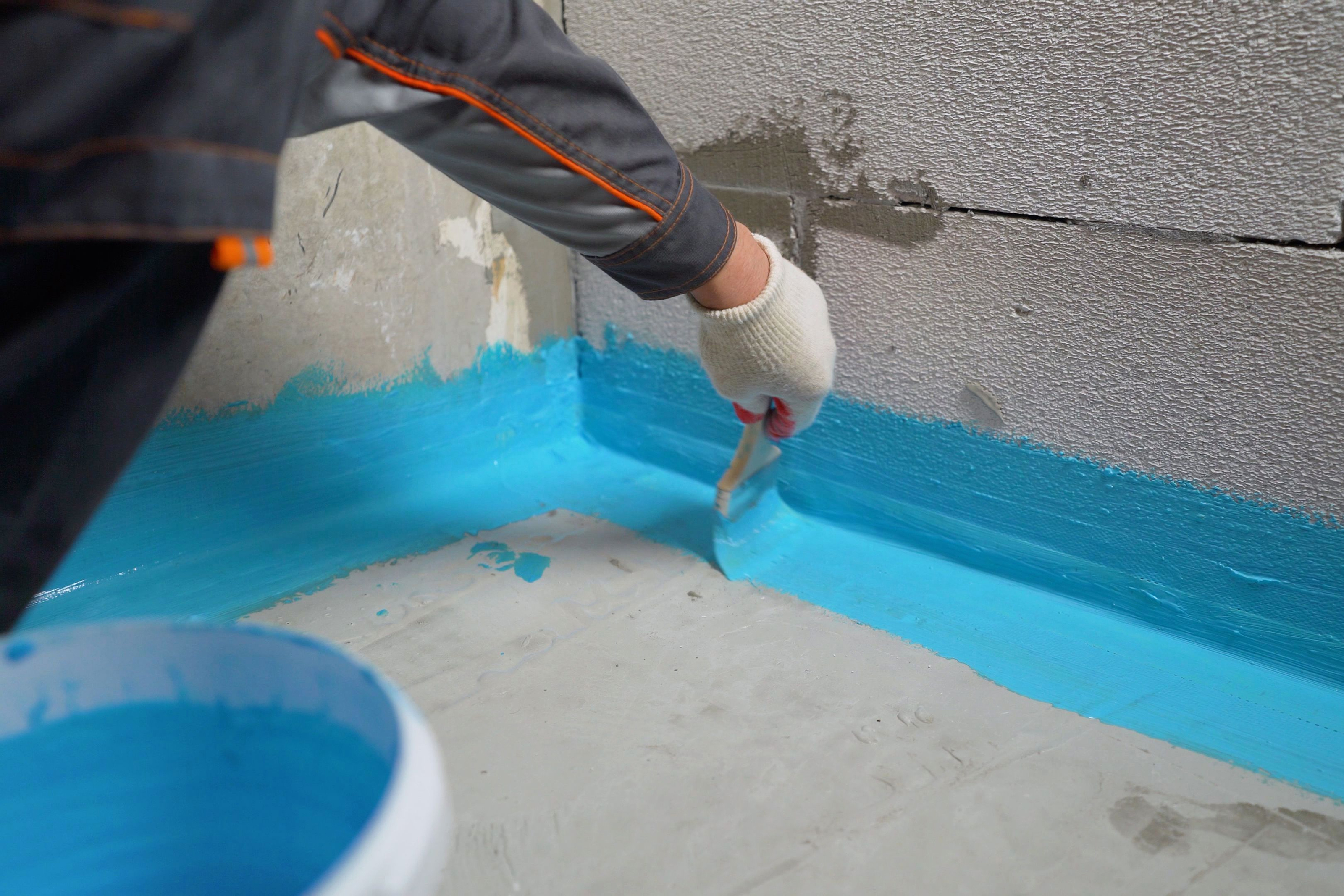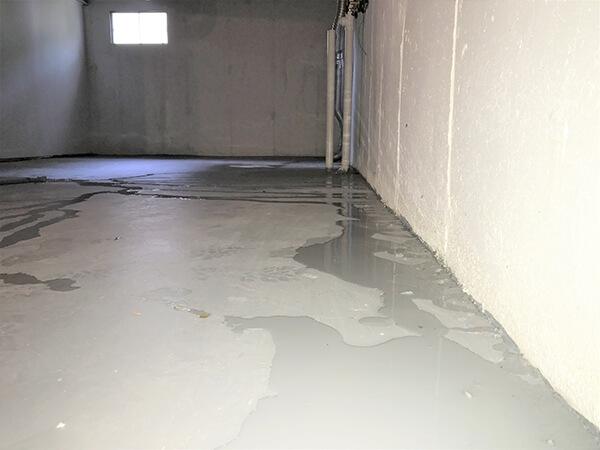Exactly How Cellar Waterproofing Functions: A Comprehensive Overview for Your Home
Basement waterproofing is vital for protecting homes from water damages. Different approaches exist to attend to dampness concerns, each customized to specific causes. Property owners must comprehend these alternatives to pick the best service for their requirements - Water Solutions Omaha. The performance of these approaches relies on the ideal products and methods. What are the most usual techniques, and exactly how can they be implemented effectively? This guide will explore these vital elements
Recognizing the Reasons of Cellar Dampness
Basements are usually developed to be practical and completely dry spaces, they can drop victim to wetness due to different aspects. One primary cause is bad drainage around the structure, which can bring about water merging and infiltration. In addition, hefty rains or quick snowmelt can overwhelm drainage systems, intensifying moisture problems. Another significant variable is the natural moisture present in the ground, which can penetrate with walls and floors, especially in older homes with much less efficient obstacles. Cracks in the structure may also enable water invasion, especially during durations of hefty rainfall. Moreover, plumbing leakages within the cellar can contribute to moisture build-up, producing an atmosphere favorable to mold development. Ultimately, inadequate ventilation can catch humidity, worsening the overall moisture issue. Recognizing these causes is essential for house owners looking for efficient remedies to stop cellar moisture issues.
Types of Basement Waterproofing Techniques
Basement waterproofing methods are essential for safeguarding homes from moisture damage and keeping a safe living setting. These approaches can be generally categorized into exterior and interior solutions. Interior waterproofing generally involves the setup of drainage systems, sump pumps, and vapor barriers. These systems function to divert water far from the cellar and prevent dampness from penetrating with the walls or floor.On the various other hand, exterior waterproofing focuses on protecting against water from entering the home in the top place. This can consist of excavation around the structure, applying water resistant finishings, and mounting water drainage tiles to redirect water away from the framework. In addition, some home owners might decide for a mix of both indoor and outside approaches to assure comprehensive protection. Eventually, the option of waterproofing method depends on the particular problems of the home and the level of moisture present in the cellar.
Materials Used in Waterproofing Solutions

Different materials are used in waterproofing remedies to boost the performance of both outside and interior techniques. Frequently utilized products consist of liquid membrane layers, which produce a smooth obstacle against dampness. These membranes are commonly made from polyurethane or rubberized asphalt, supplying adaptability and longevity. In addition, cementitious waterproofing products are preferred for their simplicity of application and solid adhesion to surfaces.For outside applications, materials such as water drainage boards and geotextiles are reliable in redirecting water away from foundations. Squashed stone and website link gravel are additionally used in water drainage systems, promoting correct water flow and minimizing stress accumulation. In some instances, specialized sealants and finishings, like silicone or epoxy, are applied to give additional protection versus water infiltration. With each other, these products play an essential duty in making certain that a cellar remains completely dry and safeguarded from water damages.
Steps to Water-proof Your Cellar
Waterproofing a basement includes an organized method to effectively avoid water intrusion and damages. The initial step is to examine the exterior of the home, looking for splits or gaps in the foundation. These ought to be secured with an ideal water resistant sealer. Next, validate that downspouts and seamless gutters are working appropriately and routing water far from the foundation.After attending to exterior concerns, the inside must be assessed. Installing a waterproof membrane on cellar walls can give additional protection. Water Solutions. It's also recommended to carry out a sump pump system to handle any type of water accumulation.Finally, grading the landscape around the home can help direct water far from the structure, more minimizing the threat of water infiltration. By following these actions faithfully, property owners can produce a robust defense against cellar flooding and dampness problems
Maintenance and Prevention Tips for a Dry Cellar
Regular upkeep and proactive actions are key to making certain a dry cellar long after initial waterproofing efforts. Property owners must consistently examine downspouts and gutters, ensuring they direct water away from the structure. It is necessary to keep these clear of particles to avoid overflow. Additionally, keeping proper rating around the home helps network water far from the structure.Checking for splits in floorings or wall surfaces is crucial, as these can enable wetness seepage. Any determined cracks should be promptly secured with suitable materials. Installing a sump pump can supply added defense versus flooding.Humidity levels in the cellar must likewise be kept track of, as high moisture can lead to mold development. Using a dehumidifier can help keep a comfortable environment. Guaranteeing appropriate air flow in the cellar aids in minimizing dampness build-up, preserving the stability of the waterproofing system over time.
Regularly Asked Inquiries
The Length Of Time Does Cellar Waterproofing Generally Last?
The durability of cellar waterproofing frequently varies based on products and installment quality. Commonly, it can last from 5 to one decade, with some systems potentially withstanding longer if appropriately maintained and kept track of gradually.
Can I Water-proof My Basement Myself?
The individual considered whether to water resistant their basement individually. While DIY choices exist, they require knowledge of products and methods. Professional solutions assure efficient results, commonly outweighing the potential risks and challenges connected with self-installation.

What Are the Indications of Inadequate Waterproofing?
Indicators of poor waterproofing consist of persistent wetness, mold and mildew growth, moldy odors, peeling paint, and water stains on floorings or wall surfaces. Homeowners should address these issues without delay to avoid additional damage and keep a healthy living setting.

Does Cellar Waterproofing Boost Home Value?
Cellar waterproofing can improve a home's value by preventing water damages and improving habitable area. Possible buyers often focus on completely directory dry cellars, making waterproofing a useful investment that adds to general residential property allure and bankability.
Exactly How Much Does Basement Waterproofing Cost generally?
The average price of basement waterproofing normally ranges from $1,500 to $5,000, differing based upon elements such as project dimension, approach used, and regional market problems. House owners should acquire numerous quotes for exact quotes. Cellar waterproofing is necessary for protecting homes from water damage. Cellar waterproofing approaches are vital for shielding homes from wetness damages and maintaining a secure living setting. These systems function to draw away water away from the cellar and protect against moisture from permeating with the wall surfaces or floor.On the various other hand, exterior waterproofing focuses on preventing water from going into the home in the first location. The long life of cellar waterproofing frequently varies based on materials and setup high read here quality. Cellar waterproofing can improve a home's worth by stopping water damage and enhancing livable room.